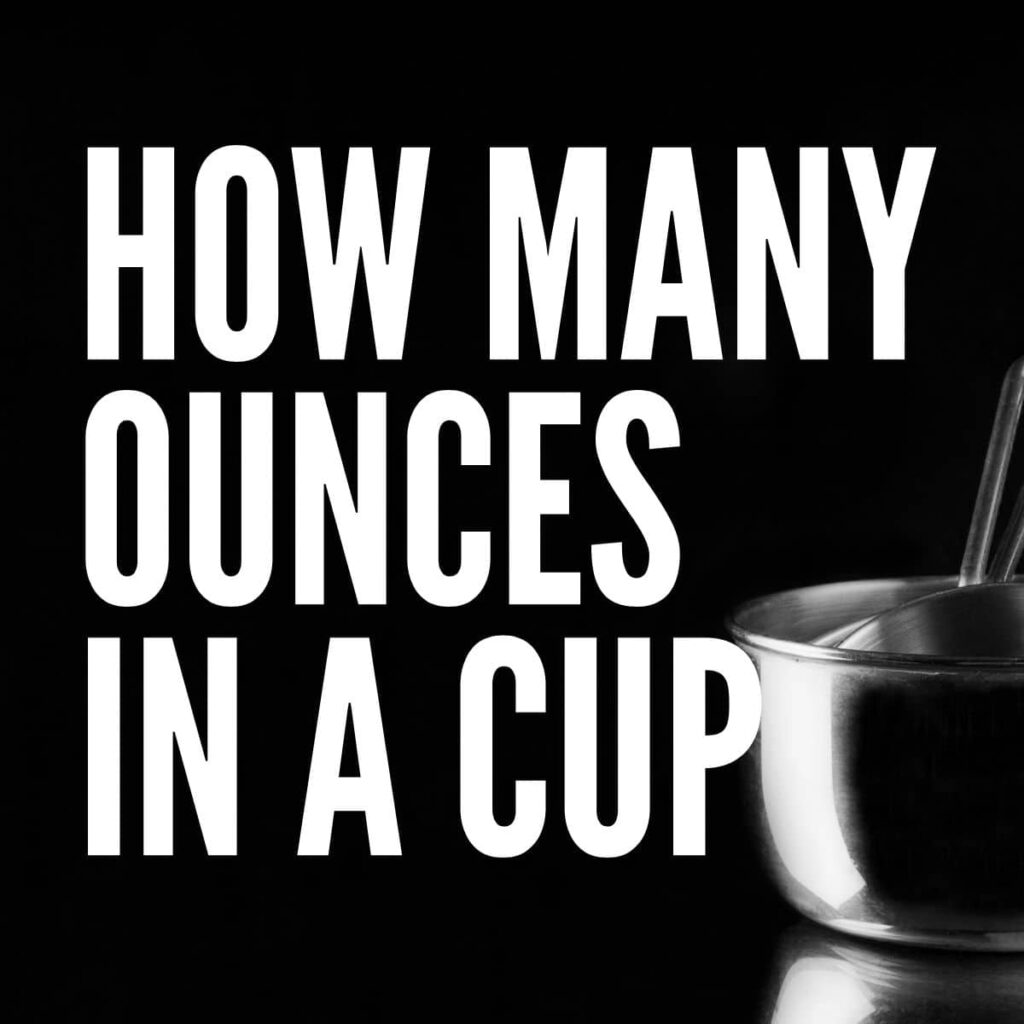Measurement units play a vital role in cooking, baking, and various other aspects of our daily lives. One common question that often arises is, “How many ounces are in a cup?” If you are looking for the answer to this question, I think you have come to the right place.
In this article, I will unraveling the mystery of how many ounces are in a cup, and equipping you with the knowledge needed to confidently navigate the measurement maze.

1. Understanding the Basics: Ounces and Cups
Before we dive into the conversion between ounces and cups, let’s establish a solid understanding of these two units of measurement.
Ounce (oz)
The ounce is a unit of weight or volume used in both the United States and other countries.
In the context of liquid measurement, it refers to fluid ounces (fl oz), while in the context of dry ingredients, it refers to dry ounces (oz).
Cup (c)
The cup is a widely used unit of volume measurement in cooking and baking.
- In the United States, 1 cup is equal to 8 fluid ounces (fl oz)
- For dry ingredients, 1 cup is equal to 8 dry ounces (oz)
2. How Many Ounces in a Cup: Conversion Guide
To better understand the conversion between ounces and cups, let’s explore the measurements for both fluid ounces and dry ounces.
2.1. How Many Fluid Ounces in a Cup?
When working with liquids, such as water, milk, or juice, it’s essential to know how many fluid ounces are in a cup. Here’s a liquid ingredients conversion chart.
| CUPS (c) | FLUID OUNCES (fl oz) |
| 8 cups | 64 fl oz |
| 4 cups | 32 fl oz |
| 2 cups | 16 fl oz |
| 1 cup | 8 fl oz |
| ¾ cup | 6 fl oz |
| ½ cup | 4 fl oz |
| ¼ cup | 2 fl oz |
2.2. How Many Dry Ounces in a Cup?
When dealing with dry ingredients, such as flour, sugar, or grains, the conversion between ounces and cups may differ slightly. Here’s a dry ingredients conversion chart.
| INGREDIENTS | CUP (c) | OUNCES (oz) | GRAMS (g) |
| Flour | 1 cup | 4 ⅖ to 4 ½ oz | 125 to 127 g |
| Baker’s Special Sugar (superfine sugar, castor sugar) | 1 cup | 6 ¾ oz | 190 g |
| Sugar (granulated white) | 1 cup | 7 oz | 200 g |
| Packed Brown Sugar (light or dark) | 1 cup | 7 ½ oz | 213 g |
| Cheese (coarsely grated cheddar, jack, mozzarella, or Swiss) | 1 cup | 4 oz | 113 g |
| Butter | 1 cup | 8 oz | 227 g |
| Baking Powder | 1 tsp | 0.16 oz | 4 g |
| Baking Soda | ½ tsp | 0.081 oz | 3 g |
| Almond Flour | 1 cup | 3 1/8 oz | 96 g |
| Whole Almonds | 1 cup | 5 oz | 142 g |
| Chocolate Chips | 1 cup | 6 oz | 170 g |
| Chocolate Chunks | 1 cup | 6 oz | 170 g |
| Cacao Nibs | 1 cup | 4 ¼ oz | 120 g |
| Fresh Blueberries | 1 cup | 5 to 6 oz | 140 to 170 g |
| Crushed Graham Crackers | 1 cup | 5 oz | 142 g |
3. The Benefits of Knowing How Many Ounces Are in a Cup
Understanding the conversion between ounces and cups brings several benefits to your culinary endeavors. Here are a few advantages
Recipe Accuracy
Precise measurements are crucial for achieving consistent results in cooking and baking. Knowing how many ounces are in a cup allows you to follow recipes accurately, ensuring the right balance of ingredients and flavors.
Ingredient Substitutions
Sometimes, you may need to substitute one ingredient for another based on availability or dietary preferences. Understanding the conversion between ounces and cups allows you to make appropriate ingredient substitutions while maintaining the desired consistency and taste in your dishes.
Portion Control
Understanding the measurement of ounces in a cup helps you control portion sizes, especially when serving beverages or individual servings.
You can accurately gauge the number of fluid ounces in a standard cup, promoting portion control and balanced servings.
Consistent Baking
Baking is a science that relies heavily on precise measurements. Knowing how many dry ounces are in a cup enables you to measure flour, sugar, and other dry ingredients accurately, resulting in consistent textures and flavors in your baked goods.
The next time you encounter a recipe calling for ounces or cups, I hope that you can approach it with confidence, armed with the understanding of how to convert between these fundamental units of liquid measurement. Happy cooking!


Comments are closed.